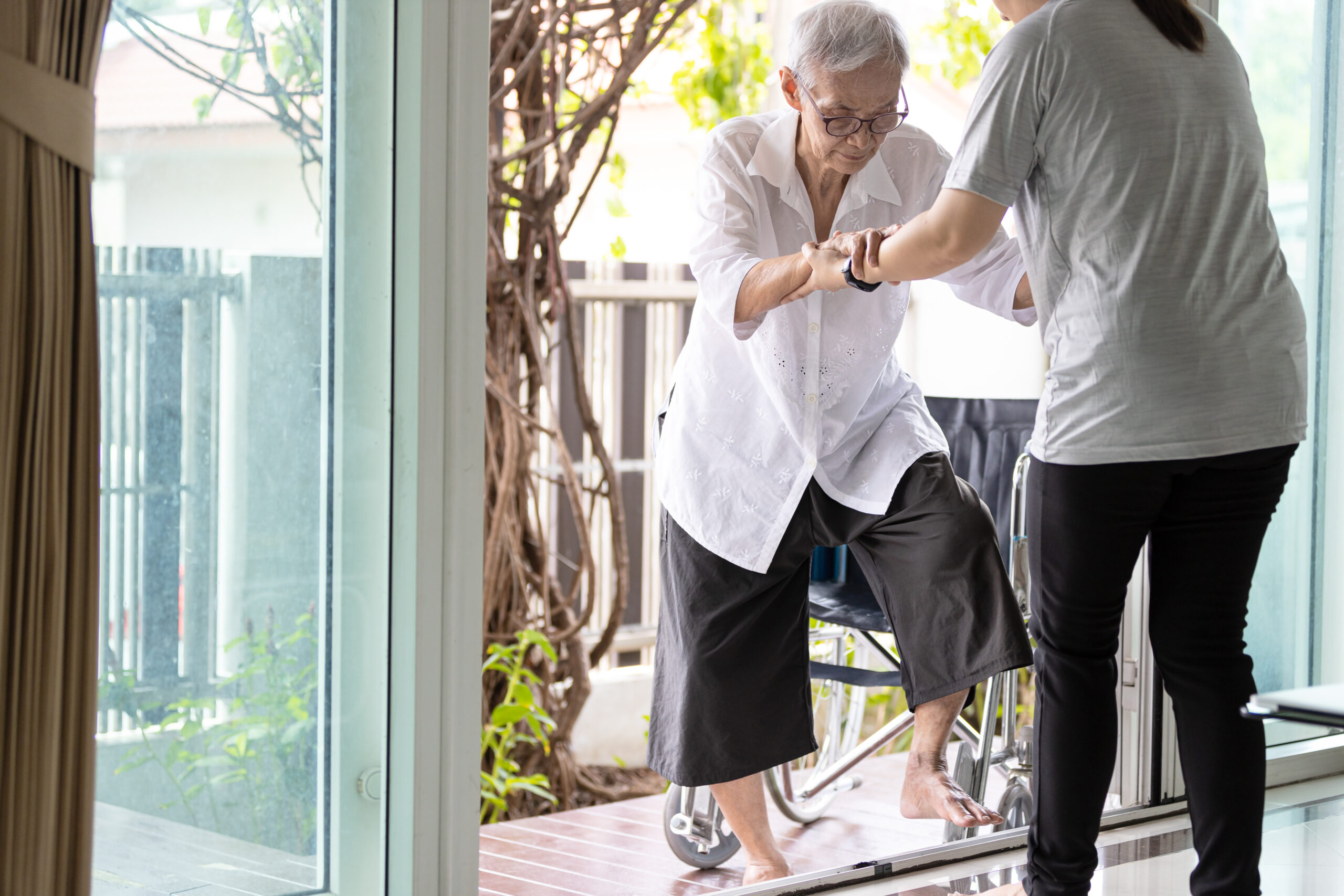
Tripping and falling is often a worry for older adults, and for good reason—more than one in four falls each year. So, it’s no surprise that families and caregivers spend a lot of energy ensuring loved ones’ homes are set up with fall prevention in mind. But what’s often overlooked is the impact physical therapy can have when it comes to keeping them safe. Here’s how.
Protecting loved ones from falling
While most falls aren’t serious, one in five falls leads to painful problems like broken bones or even head injuries. Injuries from falls can also lead a person into a long recovery period and can affect many aspects of their day-to-day life, including how they get around in their home, cook, or bathe.
It’s important to protect your loved ones who may be at a higher risk of falls due to their health problems or other issues. For example, a person may be at an increased risk of falling if they have:
- Balance or walking problems
- Foot problems or lower body weakness
- Medications that affect their balance
- Tripping hazards in their home
- Vision issues
Additionally, if someone falls once, their chance of doing so again doubles. To further complicate matters, they sometimes get so scared of falling again, that they become less active—which can lead them to become weaker which, unfortunately, puts them at even greater risk.
The good news? Proactive physical therapy can help older adults build strength, improve balance, and feel steadier on their feet, all with the goal of helping them stay healthy and safe as they age.
What do physical therapists do?
Physical therapists are experts in the science of the way people move. They not only treat people with fall-related injuries but also work with people in a variety of ways to help them prevent falls from happening.
Of course, physical therapists can’t prevent all falls, but they can help reduce how likely someone is to fall.
Looking at a person’s unique risks
Physical therapists use specific tools and tests to understand the reasons someone might fall. For example, they may check their:
- Balance
- Endurance
- Feet and footwear
- Health background
- Medications
- Muscle strength
They’ll also look for any tripping hazards around the home like slippery rugs or electrical cords along the floor that may need to be moved or changed to make everyday activities as safe as possible.
The therapist will work to understand a person’s unique needs and goals and may ask questions to determine what they may be struggling with at home throughout the day—all with the goal of designing a personalized care plan to help them live as independently as possible.
Building strength and increasing mobility
During home physical therapy sessions, we work through a series of stretching and strengthening exercises focused on helping older individuals meet their specific goals—and will bring any needed exercise equipment or tools. The therapist will talk through every step to make sure they stay comfortable and to educate them about the issues they’re working to improve. Over time, these sessions can help older adults move around their homes with more strength and safety so they can stay healthy.
Finding better support
If you’re worried about a loved one falling, there are many resources to help. To learn more about how Traditions Health team members go the extra step to help their patients enjoy the best quality of life at home possible, click the button below to complete the Request Care form.
